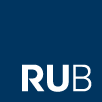AWAKENING. PAINTING AND REAL SPACE



September 10th, 2011 - January 15th, 2012
In 1949, the Italian artist Lucio Fontana was the first to pierce the material image area with a hole punch. The same year, the American artist Ellsworth Kelly created in Paris his first frameless image. Since 1952, French artist François Morellet has been covering his white painted image boards with repetitive structures. Thenceforth, we constantly discover further European and American artists that have openend up the boundaries of the framed image and started to replace the illusional image space by referring to the environment.
The exhibition "Aufbruch. Malerei und realer Raum" - "Awakening. Painting and real space" offers an overview of the artistic approach to the topic. The focus is on European and North American artists, who, since the mid-20th century, have initiated the breakup of the wholeness of an image by the means of painting. A summary of "classic" works, but also less known and young striving artists hope to set those visual forces and picturesque energies free in order to shape the perception of the viewer beyond the limits of the traditional panel.
The exhibition will not be structured into streams of art history, but different strategies concerning the opening of an image. We will find contrasting energies of colour scattering the equal flatness in the works of Günther Fruhtrunk and Bruno Gonschior. Emil Schumacher, Gerhard Hoehme, Antoni Tàpies or Jürgen Meyer's works show how concrete materials can crack the consistency of the pigment.
The impression of an pictorial wholeness is overly shaped by rapid dynamics as seen by Lucio Fontana and Arnulf Rainer. Ellsworth Kelly, François Morellet, Robert Mangold and Sabine Strassburger also use clear as well as contrasting elements in order to avoid the common notion of painting. Looking at Leon Polk Smith, Frank Stella or Mary Heilmann, we will explore autonomous image parts dissolving from the body of the image. Those image parts will invade the viewer's space in Günter Uecker, Ger van Elk, Elisabeth Vary, Erich Reusch and Michael Growe exhibits and break through the confrontation. Yves Klein, Robert Ryman and Jan Warzyniak reveal that the compactness of the image body can open up almost silently, yet no less radically, to a degree of intangible transparency. Last, but not least, Gotthard Graubner, Lee Ufan and Noriyuki Haraguchi also transform substantial corporeality into floating, unlimited energy.
All images do not depict something certain, they pesent themselves. Their dissolution of boundaries proceeds sensually direct and untheoretical. "It should meet the eye - direct" as Ellsworth Kelly once wrote to John Cage in 1950. Already at this time he had aimed at overcoming the traditional painting. "I'm not interested in painting as it has been accepted for so long - to hang on walls of houses as pictures. To hell with pictures - they should be the wall (...)."
The exhibition's starting point is the traditional European panel, from which every artist has found his own way to something, that cannot be identified as a picture anymore, but agitation and immediate experience.
An accompanying catalogue to the exhibition including numerous illustrations will be published soon.
Further stations of the exhibition:
mpk, Museum Pfalzgalerei Kaiserslautern
4 February - 22 February 2012
Akademie der Künste Berlin
4 May - 29 July 2012
Museum Kulturspeicher Würzburg
10 August - 23 September 2012
Kunsthalle Rostock
14 October, 2012 - 24 January 2013
Admission and Museum Tours:
5 Euros / 3 Euros (discounted)
Children (12 and under) with an accompanying adult are free of charge.
A Public Guided Tour will be offered every first and third Sunday of the month (no booking required): 3 Euros (plus exhibition fee)
Group tours with individual focus require booking in advance. Maximum group size:
20 people: 1 h: 70 Euros, 1,5h: 100 Euros
DOWNLOAD for camera-ready images

